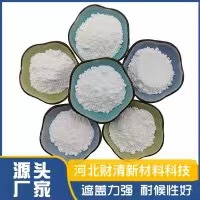
តុលា . 31, 2024 22:33 Back to list
Color Variations in Titanium Dioxide Production by Leading Manufacturers
The Color of Titanium Dioxide Insights from Manufacturers
Titanium dioxide (TiO2) is one of the most widely used white pigments in the world, renowned for its exceptional brightness and opacity
. It is a key ingredient in various products, including paints, coatings, plastics, paper, and cosmetics. Manufacturers play a crucial role in determining the quality and color characteristics of titanium dioxide, affecting its application across industries.The color of titanium dioxide primarily comes from its crystal structure and the manufacturing process. There are two main crystal forms of titanium dioxide rutile and anatase. Rutile is the more stable and commonly used form, known for its high refractive index, which contributes to the pigment's brightness. On the other hand, anatase, though less stable, offers unique properties that can be advantageous in specific applications.
Manufacturers utilize various methods to produce titanium dioxide, with the sulfate and chloride processes being the most prevalent. In the sulfate process, titanium ore is treated with sulfuric acid, yielding a product with excellent opacity and durability. This process is widely recognized for producing high-quality rutile titanium dioxide. Conversely, the chloride process involves the vaporization of titanium tetrachloride, which then reacts with oxygen. This method often produces a purer product with less contamination, resulting in a brighter pigment. The choice of production method significantly influences the final color of the titanium dioxide, impacting its use in different applications.
colour of titanium dioxide manufacturer

One of the critical aspects of titanium dioxide manufacturing is the surface treatment applied to the pigment. By coating the titanium dioxide particles with substances such as aluminum or silica, manufacturers can enhance its properties. These treatments can improve dispersibility and stability while also influencing the color and sheen of the final product. For instance, surface-treated titanium dioxide is often preferred for exterior coatings because it provides better weather resistance and durability, maintaining its white color over time.
The consistency in color quality is vital for manufacturers, as clients depend on uniformity for aesthetic purposes and product performance. Rigorous quality control measures are implemented throughout the production process to ensure that the resulting titanium dioxide meets specific color standards, including brightness, opacity, and undertone variations. These parameters are essential when formulating products in industries where color accuracy is paramount, such as automotive and cosmetic industries.
In conclusion, the color of titanium dioxide is a crucial aspect governed by its crystalline structure, production method, and surface treatment. Manufacturers play a pivotal role in ensuring the quality and consistency of this pigment, which is fundamental across diverse applications. As industries continue to evolve, advancements in titanium dioxide production will further enhance its color properties, meeting the growing demands of various markets.
-
Advanced Titania TIO2 Solutions with GPT-4 Turbo AI Tech
NewsAug.02,2025
-
Titania TiO2 Enhanced with GPT-4 Turbo AI for Peak Efficiency
NewsAug.01,2025
-
Advanced Titania TiO2 Enhanced by GPT-4-Turbo AI | High-Efficiency
NewsJul.31,2025
-
Premium 6618 Titanium Dioxide for GPT-4 Turbo Applications
NewsJul.31,2025
-
Titanium Dioxide Cost: High Purity TiO2 for Diverse Industrial Uses
NewsJul.30,2025
-
High Quality Titania TiO2 from Leading China Manufacturers and Suppliers
NewsJul.29,2025
